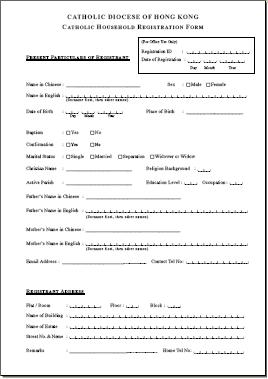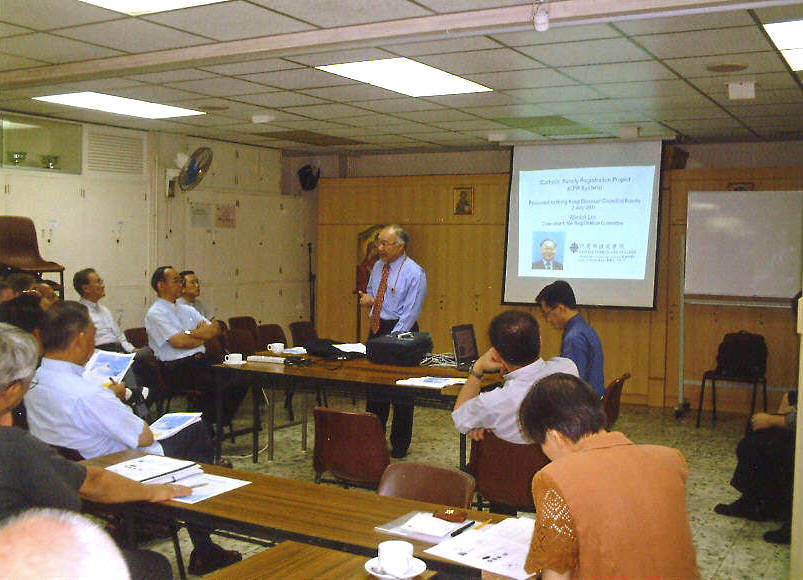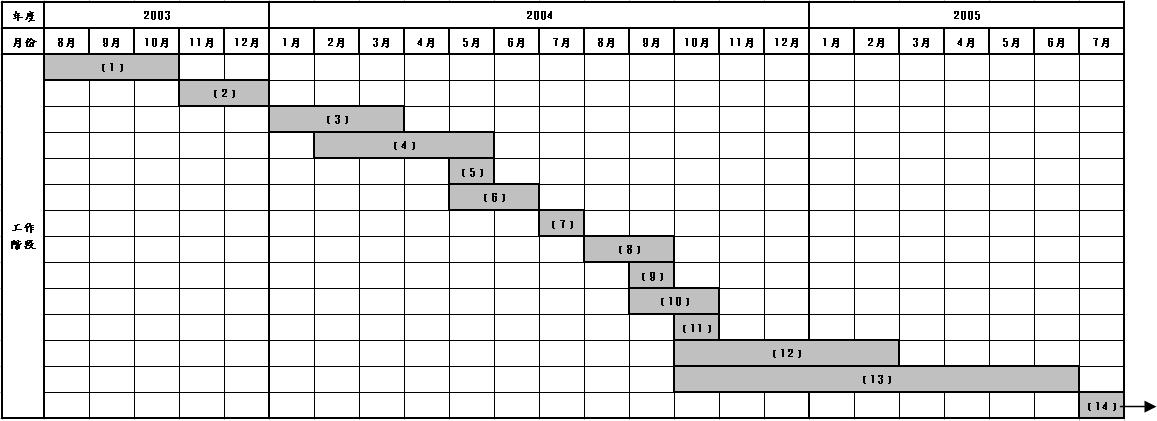| 1. History/Background Information
|
|
|
| The parish CFR Group was established in August 2003, since then it has been progressively developing a computer database system for Catholic family registration, in order to cope with the increasing amount of data on Catholic families and to assist our diocese staff in the effective handling of duties in relation to the data.
|
|

|
|
|
| A Windows-based version of the system was first introduced. To coordinate with the system, the CFR Group has designed a standard registration form, enabling registrant data to be handled in a unified manner.
|
|
|
| Subsequently, to deal with the problems in integrating cross-parish data and to improve the existing CFR System, a new web-based version of the CFR system was officially launched incorporating valuable feedbacks from the system's users.
|
|
|
| To date, the CFR group continues to make further improvements over the security and stability of the system, as well as developing extensions to manage the data relating to both deceased Catholics and baptized Catholics.
|
| 2. Objectives
|
|
|
(1)
To set up a unified and standard form for registration data. By standardising the collection and handling of data, further development and enhancement of the CFR System can be made more conveniently.
|
|

Click to view full image
|
|
|
(2)
To let parish use a unified and sound database of brethrens. Using family as the counting unit is easy and convenient for brethrens from different parish to save and update the data of new brethrens. Through the use of charts or diagrams for analysis, the parishes could learn more about and care for the need of their fellow brethrens. The wealth of information contained in the database aids parishes in keeping close contact with their brethrens, and providing tailored service for them.
|
|
|
(3)
To formulate long-term duties for brethrens through the overviews provided by the CFR System database.
|
| 3. Methods
|
|
|
| Laity just needs to fill in the Catholic Family Registration Form provided by the parish, and then return the completed form. The parish staff would then enter the provided information into the computer, and the data will go straight to the main server. The information contained in the database includes the gender, education level, occupation, martial status, religious background, sacrament record of the brethren as well as the parish that he/she is considered active in. Using a centralised database server can avoid data duplication, and aid parishes in handling of cross-parish registrant information.
|
|

|
| Catholic Family Registration System seminar
|

|
| Parish's staff on trial of the system after the seminar
|

|
First presentation to the Priests' Council Members
|
| More... >>
|
|
|
|
| Diocese and parishes may swiftly lookup data on our brethrens through the CFR system. Data are stored in the system on a family basis. Each family consists of a householder and his/her family members (applicable to both brethrens and non-brethrens). Parishes could check the data by one of the family members. For instance, parish staff could browse the name list of other family members and the relation chart of the whole family just by inputting the name of one of the family members.
|
|
|
| Parishes may do a chart analysis by using the CFR system. For example, sorting out the distribution of baptized brethrens at different ages in order to allocate sufficient resources and formulate long-term duties for baptized brethrens. In addition, the CFR System has printing facility for address labels and contact listing, promoting closer contact between parishes and brethrens.
|
|
|
| The web-based CFR System has specifically reinforced its security. Each parish have been issued with an electronic certificate, which is pre-installed on a dedicated computer terminal, for the purpose of identity authentication. Only the priest of parishes and authorized parish staff may access the data in the CFR System.
|
| 4. Progress of Work and System Development
|
|
|

|
| (1)
|
[August-October, 2003]
|
Develop the CFR System (Windows version)
|
| (2)
|
[November-December, 2003]
|
Testing of the CFR System (Windows version)
|
| (3)
|
[January-March 2004]
|
Organising talk for promoting the CFR System (Windows version)
|
| (4)
|
[February-May 2004]
|
Developing the CFR System (Webpage version)
|
| (5)
|
[May 2004]
|
Testing of the CFR System (Webpage version)
|
| (6)
|
[May-June 2004]
|
Verifying data
|
| (7)
|
[July 2004]
|
Organising talk for promoting the CFR System (Webpage system)
|
| (8)
|
[August-September 2004]
|
Coordinating the CFR System (Webpage version) with the Baptists system
|
| (9)
|
[September 2004]
|
Carrying out probation period of the CFR System (Webpage version)
|
| (10)
|
[September-October 2004]
|
Managing data of deceased brethrens
|
| (11)
|
[October 2004]
|
Launching the CFR System (Webpage version)
|
| (12)
|
[October 2004-December 2005]
|
Issuing and installing electronic certificates
|
| (13)
|
[October 2004 - June 2005]
|
Holding introduction talk of the CFR System (Webpage version) in different parishes
|
| (14)
|
[July 2005 - Present]
|
Begin merging the database of the CFR System (Webpage version) with parish graveyard database system
|
| 5. Achievements
|
|
|
| Subsequently, there are more than 50 parishes using the CFR System (Webpage version). There are around 40,000 new personal data with approximately 15,000 families. We believe that the amount of data will continue to rise; hence the system will become increasingly capable of enhancing the services provided by the diocese and its parishes in their work of preaching our faith, as well as getting to grips with current trends and anticipations in our modern society.
|
| Family Cases Specification |
| Version |
File Type |
Size |
|
| Microsoft Office Word 2003 Version |
.doc |
485KB |
Download |
| Adobe Acrobat Version |
.pdf |
562KB |
Open |
| Guidelines for Data Entry & Data Collection [As of September, 2004] |
| Version |
File Type |
Size |
|
| Adobe Acrobat Version |
.pdf |
77KB |
Open |
| CFR analysis report |
| Version |
File Type |
Size |
|
| CFR analysis report |
.pdf |
6.14MB |
Open |
|




